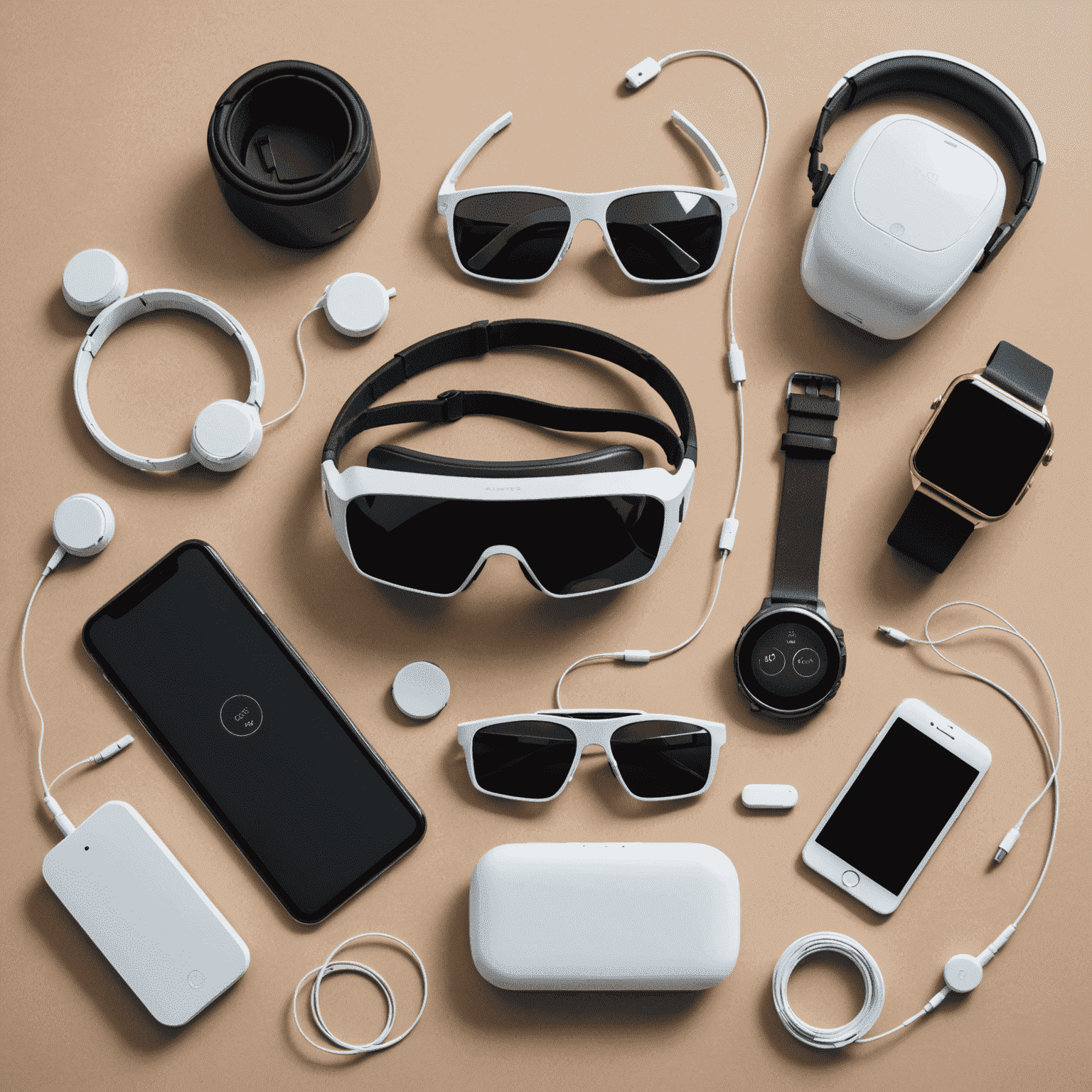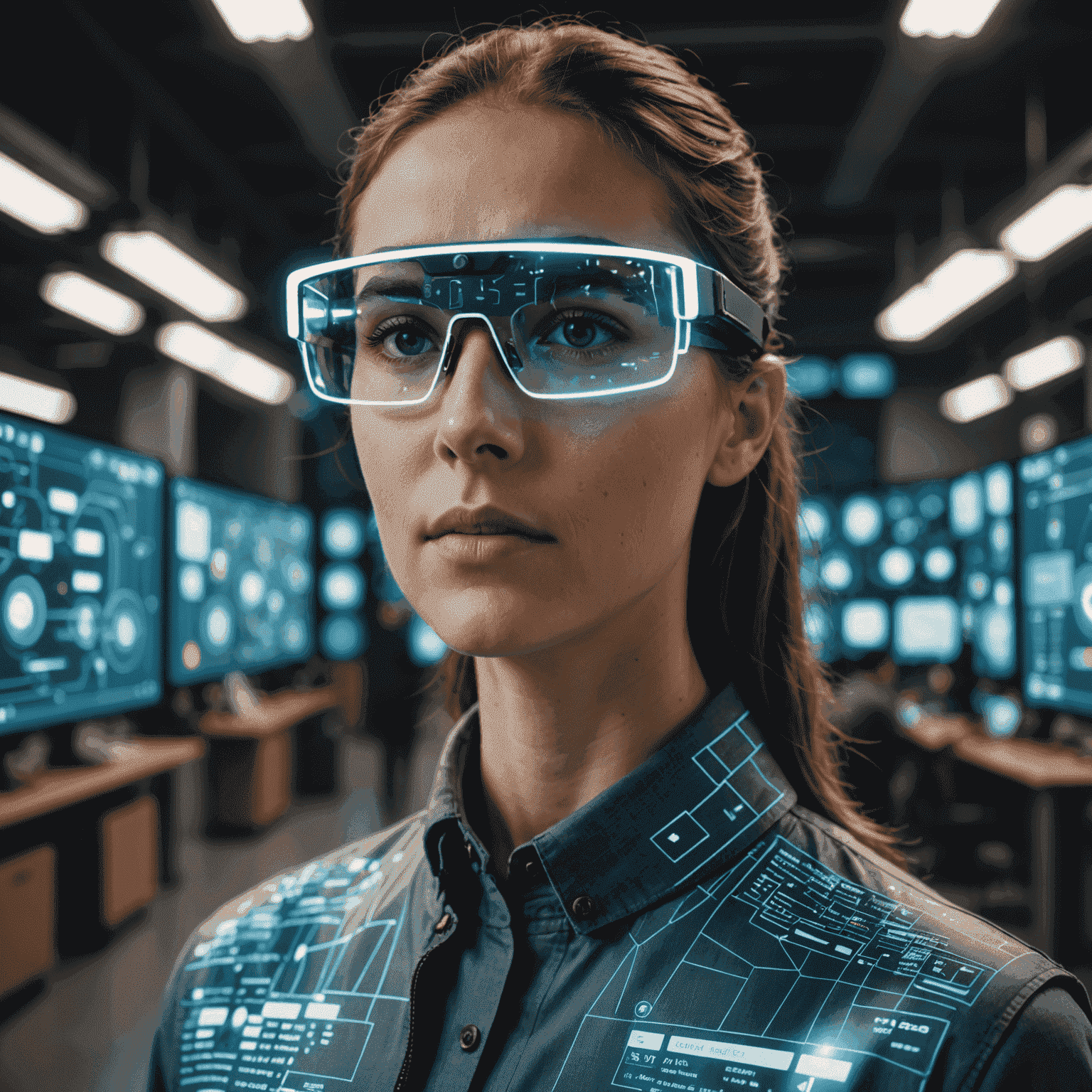The Future of Wearable Tech: Beyond Smartwatches

As we venture further into the digital age, wearable technology is evolving at an unprecedented pace. While smartwatches have dominated the market in recent years, the future of wearables extends far beyond our wrists. Let's explore the exciting trends that are set to revolutionize how we interact with technology on a daily basis.
Smart Clothing: The New Second Skin
Imagine a world where your clothes not only keep you comfortable but also monitor your vital signs, adjust to environmental changes, and even charge your devices. This is the promise of smart clothing, and it's closer to reality than you might think.
Companies are developing fabrics with integrated sensors that can track everything from heart rate and body temperature to posture and muscle activity. These "e-textiles" could be game-changers for athletes, healthcare professionals, and everyday consumers alike.
AR Glasses: A New Way to See the World
Augmented Reality (AR) glasses are poised to transform how we perceive and interact with our environment. Unlike the bulky headsets of the past, modern AR glasses are becoming sleeker and more discreet, making them suitable for everyday wear.
From providing real-time navigation and information overlays to enhancing workplace productivity and offering immersive entertainment experiences, AR glasses have the potential to seamlessly blend digital information with our physical world.

Health-Focused Devices: Personal Health Assistants
The next generation of health-focused wearables goes beyond simple step counting. We're seeing the emergence of devices that can monitor blood glucose levels non-invasively, detect early signs of diseases, and even administer medication.
These advanced health wearables are not just for fitness enthusiasts; they're becoming essential tools for managing chronic conditions and promoting preventive healthcare. With the ability to share data directly with healthcare providers, these devices are bridging the gap between personal health monitoring and professional medical care.
The Integration Challenge
As wearable technology becomes more advanced and diverse, one of the biggest challenges will be integration. How do we ensure that our smart clothing communicates effectively with our AR glasses, which in turn sync with our health monitoring devices?
The key lies in developing universal standards and seamless connectivity protocols. Companies that can create ecosystems where various wearable devices work together harmoniously will likely lead the next wave of innovation in this space.
Privacy and Security Concerns
With the increasing amount of personal data collected by wearable devices, privacy and security will be paramount. Consumers will need assurances that their sensitive health information and daily activities are protected from unauthorized access or misuse.
As the industry evolves, we can expect to see more robust encryption methods, decentralized data storage solutions, and transparent data usage policies becoming standard features of wearable tech.
Conclusion: A Wearable Future
The future of wearable technology is bright and full of possibilities. From smart fabrics that respond to our body's needs to AR glasses that enhance our perception of the world, and health devices that act as personal medical assistants, we're entering an era where technology truly becomes a part of us.
As these innovations continue to develop and integrate into our daily lives, they promise not just to make us more connected, but also healthier, more informed, and more capable. The wearable revolution is just beginning, and it's set to transform our relationship with technology in ways we're only starting to imagine.